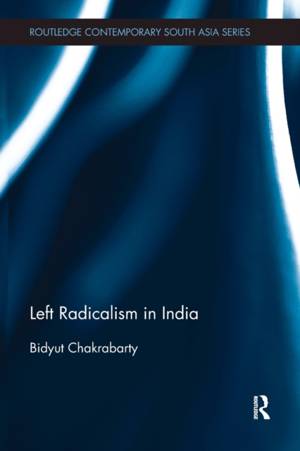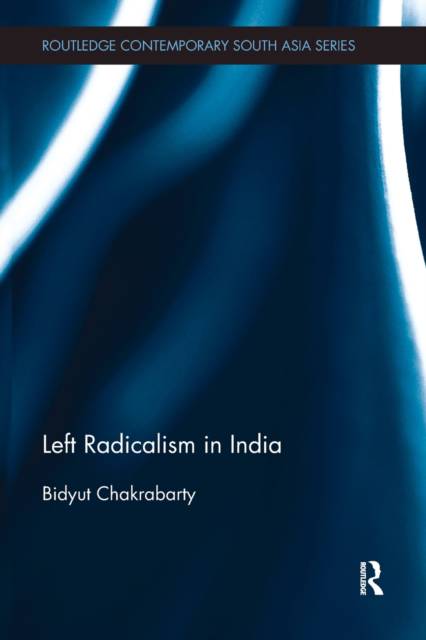
- Retrait gratuit dans votre magasin Club
- 7.000.000 titres dans notre catalogue
- Payer en toute sécurité
- Toujours un magasin près de chez vous
- Retrait gratuit dans votre magasin Club
- 7.000.0000 titres dans notre catalogue
- Payer en toute sécurité
- Toujours un magasin près de chez vous
Description
Left radicalism in India was rooted in the nationalist movement and was set in motion in the 1920s with the formation of the communist party. The communist movement manifested itself differently in each phase of India's political history and Communism continues to remain a meaningful alternative ideological discourse in India.
This book examines left politics in India focusing on its rise, consolidation and relative decline in the present century. Left radicalism in India is a distinct ideological phenomenon which is articulated in two complementary ways: while the parliamentary left remains social democratic in character, its bête noire, the left wing extremists, continue to uphold the classical Marxist, Leninist and Maoist notion of violent revolution. By concentrating on the nature and also activities of these two versions of left radicalism, this book is a thorough study of the phenomenon. The author analyses the states of Kerala, West Bengal and Tripura and presents a variety of case studies of communist movements. He argues that the political power of the left parties depends on the degree to which they have built organizational strength, political hegemony and a broad social base through legal and extra-parliamentary struggles.
An in-depth study of socio-economic circumstances that remain critical in conceptualizing radical extremism, Left Radicalism in India will be of interest to those studying Indian Politics, South Asian History, Development Studies and Global Politics.
Spécifications
Parties prenantes
- Auteur(s) :
- Editeur:
Contenu
- Nombre de pages :
- 262
- Langue:
- Anglais
- Collection :
Caractéristiques
- EAN:
- 9781138491540
- Date de parution :
- 24-01-18
- Format:
- Livre broché
- Format numérique:
- Trade paperback (VS)
- Dimensions :
- 156 mm x 234 mm
- Poids :
- 371 g

Les avis
Nous publions uniquement les avis qui respectent les conditions requises. Consultez nos conditions pour les avis.






